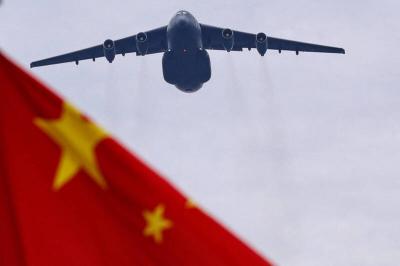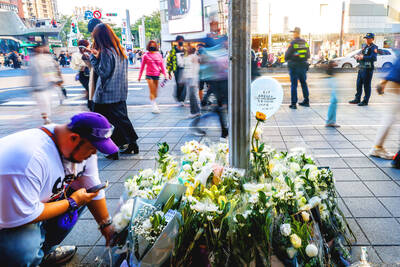An inter-agency national action plan will be launched to teach more Taiwanese students and servicemen how to swim, Sports Affairs Council Minister Tai Hsia-ling (戴遐齡) said.
The ambitious 12-year plan, supervised by the Executive Yuan, hopes to teach at least eight out of 10 Taiwanese students, soldiers, policemen and firemen how to swim, which will dramatically reduce cases of drowning, Tai said.
“In an island country like Taiwan, it is difficult to fathom why there are so many drownings and why so few people know how to swim,” Tai said, adding that President Ma Ying-jeou (馬英九), an avid swimmer, is the driving force behind the scheme.
Almost all major developed countries, such as Japan, France and the UK, have public policies to promote swimming, she said.
According to Tai, the ratio of swimming pools per 100,000 students between Japan and Taiwan is an eye-popping 188 to 9.6. Citing a WHO study conducted in 2001, she added that the ratio of drownings per 100,000 children under the age of 14 in Japan and Taiwan is 0.6 to 1.8.
Under the project, pools will be built, personnel will be trained and pool management will be improved from this year until 2022, so that local people will have better access to swimming facilities.
A supervisory committee under the Executive Yuan will set targets for different groups. Among them, 80 percent of school children, 85 percent of military servicemen and 80 percent of police officers will have to be able to swim for at least 50m, while 90 percent of firemen and all Coast Guard Administration staff will be required to pass a 200m test.

Beijing could eventually see a full amphibious invasion of Taiwan as the only "prudent" way to bring about unification, the US Department of Defense said in a newly released annual report to Congress. The Pentagon's "Annual Report to Congress: Military and Security Developments Involving the People's Republic of China 2025," was in many ways similar to last year’s report but reorganized the analysis of the options China has to take over Taiwan. Generally, according to the report, Chinese leaders view the People's Liberation Army's (PLA) capabilities for a Taiwan campaign as improving, but they remain uncertain about its readiness to successfully seize

HORROR STORIES: One victim recounted not realizing they had been stabbed and seeing people bleeding, while another recalled breaking down in tears after fleeing A man on Friday died after he tried to fight the knife-wielding suspect who went on a stabbing spree near two of Taipei’s busiest metro stations, Taipei Mayor Chiang Wan-an (蔣萬安) said. The 57-year-old man, identified by his family name, Yu (余), encountered the suspect at Exit M7 of Taipei Main Station and immediately tried to stop him, but was fatally wounded and later died, Chiang said, calling the incident “heartbreaking.” Yu’s family would receive at least NT$5 million (US$158,584) in compensation through the Taipei Rapid Transit Corp’s (TRTC) insurance coverage, he said after convening an emergency security response meeting yesterday morning. National

Taiwan has overtaken South Korea this year in per capita income for the first time in 23 years, IMF data showed. Per capita income is a nation’s GDP divided by the total population, used to compare average wealth levels across countries. Taiwan also beat Japan this year on per capita income, after surpassing it for the first time last year, US magazine Newsweek reported yesterday. Across Asia, Taiwan ranked fourth for per capita income at US$37,827 this year due to sustained economic growth, the report said. In the top three spots were Singapore, Macau and Hong Kong, it said. South

PLANNED: The suspect visited the crime scene before the killings, seeking information on how to access the roof, and had extensively researched a 2014 stabbing incident The suspect in a stabbing attack that killed three people and injured 11 in Taipei on Friday had planned the assault and set fires at other locations earlier in the day, law enforcement officials said yesterday. National Police Agency (NPA) Director-General Chang Jung-hsin (張榮興) said the suspect, a 27-year-old man named Chang Wen (張文), began the attacks at 3:40pm, first setting off smoke bombs on a road, damaging cars and motorbikes. Earlier, Chang Wen set fire to a rental room where he was staying on Gongyuan Road in Zhongzheng District (中正), Chang Jung-hsin said. The suspect later threw smoke grenades near two exits